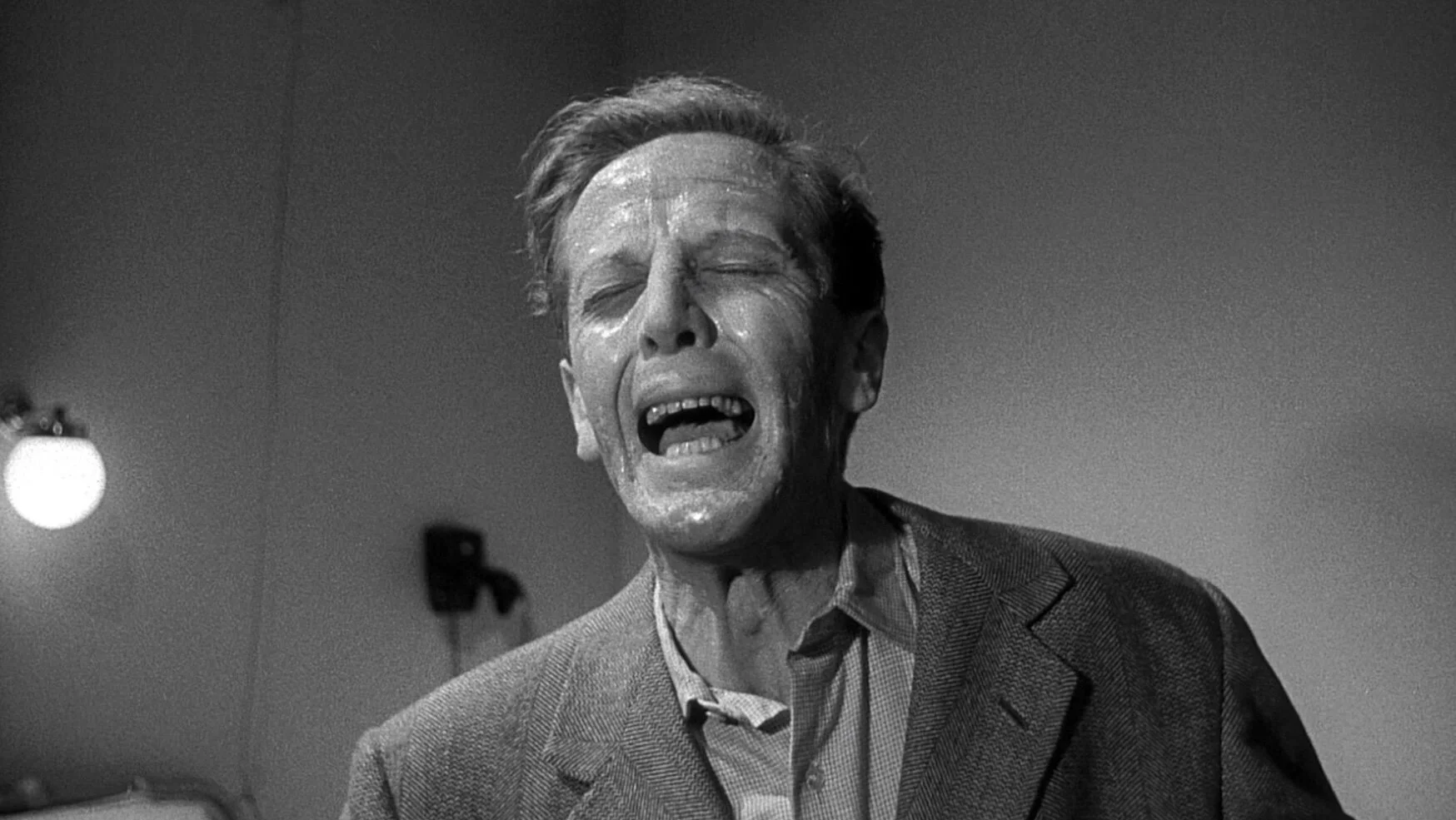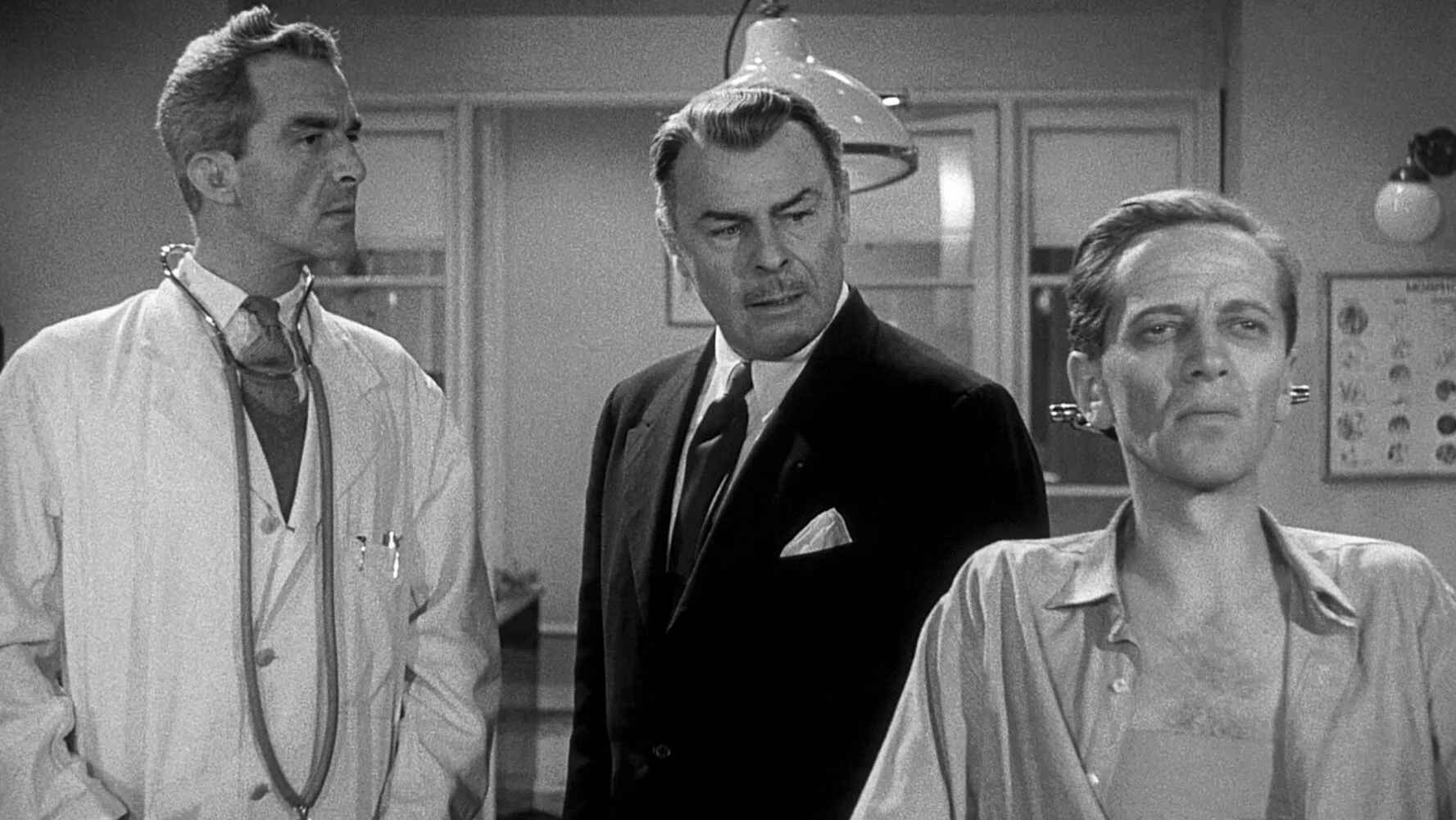Danse Macabre #2: Film Review — "The Creeping Unknown" (1955)
In 1981, Stephen King published Danse Macabre, a work of non-fiction wherein the author acts as a tour guide through the history of horror. He addresses the social issues and political conflicts that have influenced creators over the years, and the ways creators have influenced each other.
King closes out the volume by recommending 96 films and 113 books released during the 1950-1980 period that he feels have significantly contributed to modern genre fiction. With this Fearsome Queer column, I’ll be making my way through those titles in no particular order.
I argued with myself in a very Jekyll & Hyde fashion for days over how to name this post. The headline I ultimately decided on probably put some’a y’all’s knickers in a twist because “The Creeping Unknown” is this film’s American import title. Nowadays, it’s more commonly known by its original (and better) UK title: The Quatermass Xperiment. For some reason, a lot of mid-century British genre pictures were renamed mid-jaunt across the pond (see: The City of the Dead). My rationale for using the inferior US distribution title for the headline is because that’s how King lists it in Appendix I of Danse Macabre—and this is a Danse Macabre column after all. But don’t be too cross with me because for the remainder of this review I’ll be referring to Val Guest’s highly influential film only by its original title.
Audiences first met Dr. Bernard Quatermass in the summer of 1953 on television. The Nigel Kneale-penned BBC serial The Quatermass Experiment (with an E) was broadcasted live as six half-hour episodes; only two exist in the BBC archives, the rest were not tele-recorded and are now lost forever. This film adaptation would arrive two years later. For a mad scientist/alien invasion flick from the 1950s, I expected it to play out in a somewhat sillier manner. How foolish of me! Absent are the zappy laboratory apparatuses and oversized eye goggles and maniacal laughs that we’re accustomed to seeing in such features. What Val Guest’s direction and Brian Donlevy’s central performance offer up instead turns out to be a lot scarier.
Guest approaches this film from a very grounded, practical place. In many ways, he had to. This was one of the first Hammer Film productions—and the first to be picked up for American distribution—so they didn’t have many quids to work with (full disclosure: I’m not entirely sure what a quid is). So rather than go big on spectacle, the crew had almost no choice but to get down and dirty. This lends layers of graveness to this movie whose genre contemporaries were becoming increasingly zany and daft. Guest’s emphasis on realism over pageantry creates a gritty atmosphere in a quasi-verité sort of way.
Ramping up the film’s austerity is Brian Donlevy’s caustic portrayal of the titular scientist. The casting of Donlevy had just as much to do with business than ability. In order to increase the chances of US distribution, the producers sought an American face to take over the role previously played by Reginald Tate in the BBC serial. Donlevy’s performance took the character of Professor Quatermass to terser realm than Tate’s more sensitive, inquisitive researcher. There’s a particular sharpness to Donlevy that can be read a couple of ways. His cold, callous demeanor could be viewed by certain moviegoers as a reactionary post-war ambition for national security via intelligence. I think Donlevy’s American-ness has a lot do to with that interpretation. Meanwhile, others may see Quatermass’ doggedness as an example of heartlessness—mankind’s willingness to sacrifice human lives in the pursuit of knowledge and power. And, once again, Donlevy being an American actor in the early Cold War years might have something to do with that analysis. I’m honestly not sure which reading Guest is going for, but both work.
At the film’s emotion core, however, lies English character actor Richard Wordsworth as Victor Carroon, the doomed astronaut. Carroon went up into space as part of a three-man crew, but their rocket crash-landed with only Carroon returning as the sole survivor of the mission. But he returns changed. He begins to morph into an unrecognizable extra-terrestrial organism. Wordsworth, in a total 180 from Donlevy, crafts a wholly sympathetic figure. His specific and gaunt features are perfect for the part. Thanks to his face’s many physical idiosyncrasies, makeup artist Phil Leakey and cinematographer Walter J. Harvey manage to play up Carroon’s slow and horrific mutation. But although the transfiguration is frightful, Guest maintains Carroon’s humanity. We feel for him as opposed to fear him—we are never frightened of Carroon, but rather frightened for him as he loses bodily autonomy.
The Quatermass Xperiment was a bit ahead of the body horror curve in that way. The 1958 versions of The Fly and The Blob are often cited as being pioneers of the subgenre, yet here we have Val Guest doing it three years earlier. David Cronenberg would go on to become the master of body horror in the 1970s and 80s, and there’s not a shred of doubt in my mind that The Quatermass Xperiment influenced him. While watching the degeneration of Victor Carroon, all I could think about was Jeff Goldblum’s Seth Brundle in Cronenberg’s remake of The Fly. The two descents parallel one another so well. Even the makeup designs have certain similarities at times. So, due to the mix of physical and psychological terrors therein, it’s no wonder the film received the notorious “X certificate” from the British Board of Film Censors—which actually worked in the studio’s favor. Supposedly, the rating motivated them to drop the “E” from the title and highlight the “X” so as to emphasize the mature content, thus garnering intrigue…
I’m so glad I watched The Quatermass Xperiment early in my Danse Macabre journey. I have a feeling I’ll be referring back to this 1955 film repeatedly throughout this series. Only four films listed in Appendix I pre-date it. So I’m very curious to see how the subgenre(s) evolved from here—and how the story continues. Because sooner or later I’ll be covering the sequel for this column. Listed in Appendix I as Enemy from Space, Val Guest’s follow-up is better known today by its original (and I think superior) UK title: Quatermass II. I’ve heard great things about Quatermass II and even better things about Quatermass and the Pit, which sounds like an essential film in the cosmic/apocalyptic horror canon.




